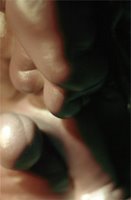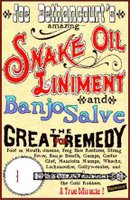Blackberry Addiction 'Similar to Drugs'
 They don't call them crackberries for nothin: A study just out from Rutgers University says those Blackberry email devices you see attached to everyone's hips (including mine) "can be so addictive that owners may need to be weaned off them with treatment similar to that given to drug users," and that Blackberries are "fuelling a rise in email and internet addiction, with sufferers able to survive only a few minutes without checking for new mail." Reports on the study call Blackberries "seriously damaging to mental health," and offer this as a diagnostic aid: "One key sign of a user being addicted is if they focus on their Blackberry ignoring those around them." Professor Gayle Porter, the scientist who lead the study, says becoming Blackberry addicted can be "devastating." And they say someday soon, we may start seeing lawsuits over this.
They don't call them crackberries for nothin: A study just out from Rutgers University says those Blackberry email devices you see attached to everyone's hips (including mine) "can be so addictive that owners may need to be weaned off them with treatment similar to that given to drug users," and that Blackberries are "fuelling a rise in email and internet addiction, with sufferers able to survive only a few minutes without checking for new mail." Reports on the study call Blackberries "seriously damaging to mental health," and offer this as a diagnostic aid: "One key sign of a user being addicted is if they focus on their Blackberry ignoring those around them." Professor Gayle Porter, the scientist who lead the study, says becoming Blackberry addicted can be "devastating." And they say someday soon, we may start seeing lawsuits over this.It's certainly true that our culture has become email-obsessed to a pathological degree. But I don't think Blackberries are the problem. I actually think they can be part of the solution. I spend far far far (far) too much time dealing with email. It's safe to say I get several hundred emails a day. For years, many of the messages I've written started with the sentence, Sorry for my slow response, but [insert excuse here, usually it's I was out of town and my inbox is now filled with hundreds of unanswered messages I'm wading through]. Because of all this, I was worried about getting my new Blackberry. I knew it might take over my life. But in fact, it's liberated me: I now don't have to wade through hundreds of unanswered emails when I come home from traveling, because I can respond to them while I'm away. Before I got a Blackberry, I spent about half of each day responding to emails, but now sometimes I go all day without even turning on my email program (because I can see if any important emails arrive with my Blackberry and ignore the rest), which allows me to focus on my writing when I'm at my computer instead of my emailing. Plus, the Blackberry forces me to keep my responses short and fast, because you can only type so much on those tiny keyboards. So honestly, I feel like the Blackberry has helped fix my email problem.
It's true, some people might find it strange that I email while dog-walking, or that I often exchange 20 or more emails a day with one particular friend -- who shall remain nameless -- and that we've been known to do this when we're both sitting in the same room. People might find it suspicious that, after this same friend convinced me to buy my Blackberry and helped me pick it out via telephone from hundreds of miles away, he started sending regular emails saying things like, "how is your berry?" and "don't you just love your blackberry," to which I always responded, "yes" within seconds. Recently, on a particularly Blackberry-heavy day, we both noted that we seemed to be developing tendonitis in our thumbs. But we've agreed: We're not addicted. Our Blackberries have helped us get our lives back (we've been emailing like this for years, now we just spend less time at our desks doing so). This morning, another good friend -- who shall also remain nameless, but who I'll call "Dinty" -- forwarded this article with a note saying he's, "consumed by guilt" over over the fact that he and our other friends have become "classic 'enablers" by not taking our blackberries and locking them away. But he has nothing to worry about: He sent that email nearly an hour ago and I have even replied yet. I'm so not Blackberry addicted! What more proof could a person possibly need?!
Labels: Misc, Personal Updates, Technonlogy










